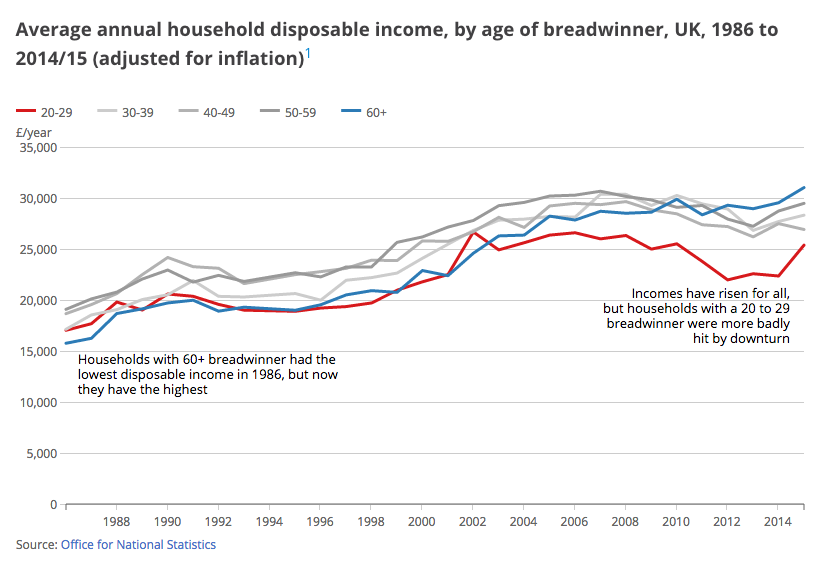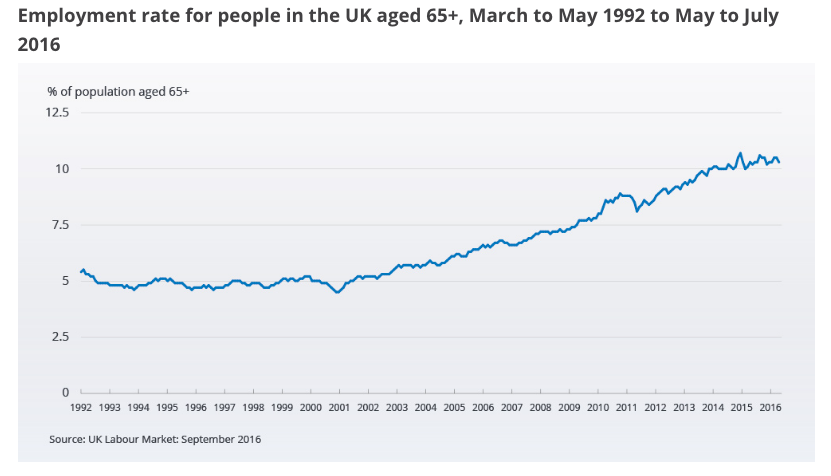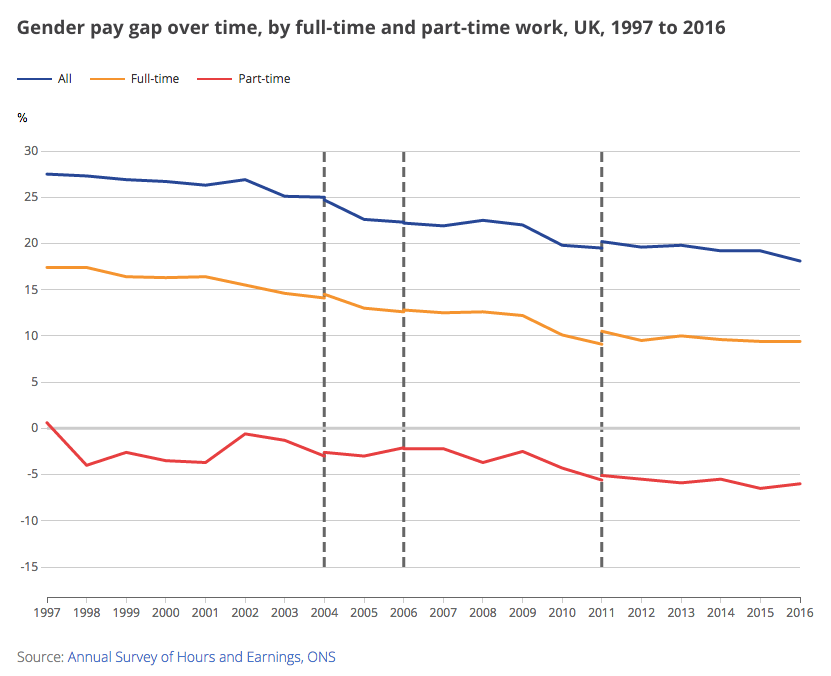Like us, the Office for National Statistics (ONS) love a good visual – “we love charts at ONS”, they say on their website, “Can’t get enough of them. They bring to lift some of the more complex statistics we produce and help to tell a story.” So, as we’re almost nearing Christmas, we thought we’d share something a bit more lighthearted and colourful. Here is our round up of the best ONS content/interactive pieces for 2016:
Breadwinners in their 20s – how are they doing compared with previous generations?
In October, the ONS released some stats which showed that while incomes have risen for households with breadwinners from all age groups since 1986, the growth for the households with breadwinners in their 20s has been slower, and they were more badly hit by the economic downturn.
Read the full story here: http://visual.ons.gov.uk/breadwinners-in-their-20s-how-are-they-doing-compared-with-previous-generations/
Women shoulder the responsibility of ‘unpaid work’
ONS stats show that women carry out an overall average of 60% more unpaid work than men. On average men do 16 hours a week of unpaid work, whereas women do 26. Unpaid work includes adult care and child care, volunteering and general housework including cooking and doing the laundry.
Use the calculator below to see how you compare.
For the full story, see: http://visual.ons.gov.uk/the-value-of-your-unpaid-work/
Five facts about … older people at work
In celebration of International Day of the Older Person on October 1, the ONS released five facts which show the impact of those aged 65 and over on the UK workplace. The graph below relates to fact number 1 – the proportion of those aged 65 and over who work has almost doubled since records were first collected.

See the other facts here: http://visual.ons.gov.uk/five-facts-about-older-people-at-work/
The gender pay gap – what is it and what affects it?
Taking data released by the Annual Survey of Hours and Earnings (ASHE), the ONS compiled a number of different visuals to show the gender pay gap by work type, occupation and age group. The gender pay gap for full-time employees in 2016 was 9.4% – down from 17.4% in 1997.

For the rest of the visuals, visit: http://visual.ons.gov.uk/the-gender-pay-gap-what-is-it-and-what-affects-it/
Baby names since 1904: how has yours performed?
We’ve saved the best until last! In September, the ONS made this impressive interactive graphic to show the top 100 names for baby boys and girls in England and Wales for every 10 years between 1904 and 1994 and for each year from 1996 onwards.
They also visualise the boys and girls names that are making a comeback. They include: William, George and Henry for boys and Florence, Elsie and Violet for girls.
For more, see: http://visual.ons.gov.uk/baby-names-since-1904-how-has-yours-performed/



